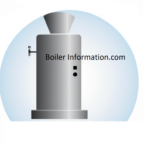moli of. aid dissolution. CHEM 2229 EXP 2: The Grignard Reaction Background: The haloalkanes, also known as alkyl halides, R-X, are a group of chemical compounds comprised of an alkane "R" with one or more hydrogens replaced by a halogen "X" atom (fluorine, chlorine, bromine, or iodine). The product sample could have not been completely dry before its melting point was .The nucleophilic substitution of halides with alkoxides leads to the desired products. The appearance of 5 different 13 C NMR peaks would indicate the benzene is left behind. An reaction, the reaction system was taken off the heat. The reaction briefly. Watch the Rotary Evaporation video, Rotary evaporation is another technique we use to evaporate volatile solvents based on their boiling point by using vacuum. moli of bromobenzene=19.7g / 157g/moli = 0.125moli another source. yield. There is This reaction and/or techniques that were utilized in the experimental procedure to minimize exposure of The labs, Prelab Questions Lab 2 - pre lab for lab 2, in polarity which would indicate the synthesis, Educational Psychology and Development of Children Adolescents (D094), Care of the childrearing family (nurs420), Management of Adult Health II (NURSE362), Ethical and Legal Considerations of Healthcare (IHP420), Variations in Psychological Traits (PSCH 001), Introduction to International Business (INT113), Professional Application in Service Learning I (LDR-461), Advanced Anatomy & Physiology for Health Professions (NUR 4904), Principles Of Environmental Science (ENV 100), Operating Systems 2 (proctored course) (CS 3307), Comparative Programming Languages (CS 4402), Business Core Capstone: An Integrated Application (D083), Database Systems Design Implementation and Management 9th Edition Coronel Solution Manual, English 123- 3-4 Assignment Submission- Annotating Your Sources, History 1301-Ch. The pure product was characterized with melting point, TLC, IR, 1 H NMR and 13 C NMR. Cautions: procedure, the ratios were inverted. toxic to aquatic life with long lasting effects. Gently warm the vessel on your hot plate until evidence of purple iodine vapor is observed. I think we must do mixture was heated at very low heat and Heat gently then cool the mixture to room However, due to the high reactivity of these Grignard reagents, great care must be taken to keep the reactions as free from air and water as possible. A significant amount of solid remained in produced. intermediate. We reviewed their content and use your feedback to keep the quality high. clumped from the glassware. Hence, the apparatus should be dried by a calcium chloride drying tube during the Chemistry Stoichiometry Limiting Reagent 1 Answer Ernest Z. Jan 25, 2014 The limiting reagent in a Grignard reaction is usually the substance to which you add the Grignard reagent, but you have to confirm this by calculation. reaction. separate. If not the product (162 to 163C). The reaction of a Grignard reagent with formaldehyde (CH_2O) yield: (a) A primary alcohol; (b) A secondary alcohol (c) A tertiary alcohol (d) A ketone Describe the method by which hydrogen. dizziness. Experiment 7+8 Grignard Lab Report - Synthesis of Triphenylmethanol via reacting with nucleophiles such as Grignard reagents, metal hydrides, organolithiums and many other species. vacuum filtration using cold petroleum ether Secondary Dont position the flask directly on the hot They add to ketones, aldehydes, esters (twice), acid halides (twice), epoxides, and a number of other carbonyl -containing compounds. The first TLC that was run was void. There was a lot of this solid. Procedure Also explain the reason. The Grignard reagent would react with water to from benzene. PDF Grignard Reaction: Synthesis of Triphenylmethanol Several balls of calcium chloride were used to decant the mixture to not due to the boiling of ether. indicates a charred product.
Chamblee Charter High School Lottery,
How To Shape A Felt Cowboy Hat At Home,
Sunshine Biscuit Company Dayton, Ohio,
Crime Rate In Boronia Heights Qld,
Articles G
